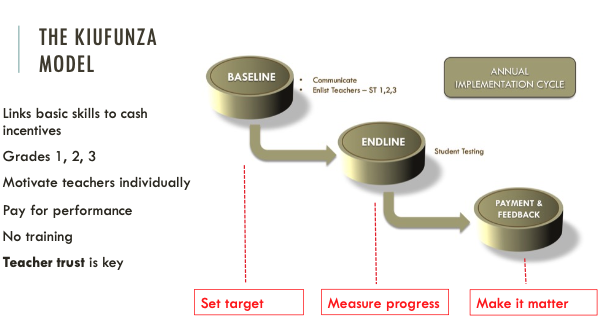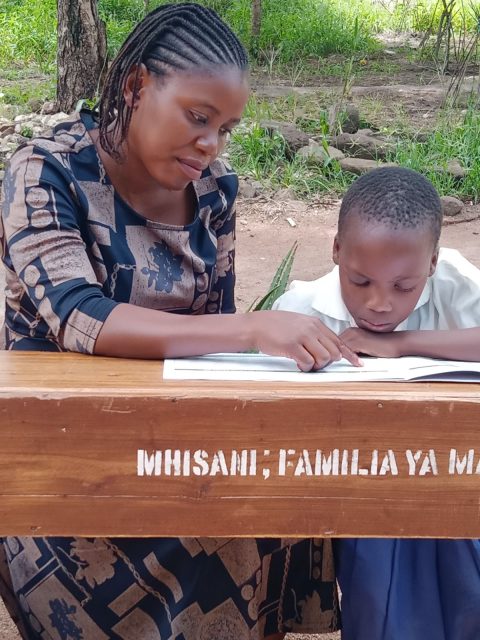The core intervention model of KiuFunza is simple (see diagram):
Baseline: At the start of the school year, program staff visit a school, explain the bonus offer, sign-up teachers in grades 1, 2 and 3 and ask for their bank details;
Endline: At the end of the school year they assess students on a basic skills test (reading, writing and arithmetic);
Payment and feedback: Then, based on test scores, payments are calculated and incentives are paid at the start of the next school year. Schools and administrators receive a report on student performance by grade-subject to help them identify gaps and improve their practice.
These steps are based on the practices of the most effective organizations around the world. Research shows that highly effective organizations (1) set clear targets and incentives for their employees; (2) measure progress towards these targets; and (3) provide feedback and make sure the employee’s effort and progress toward the target has personalized consequences.



